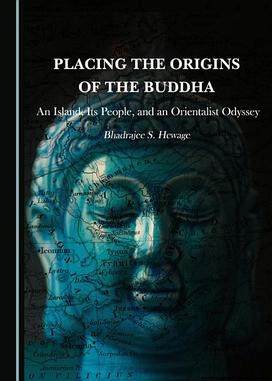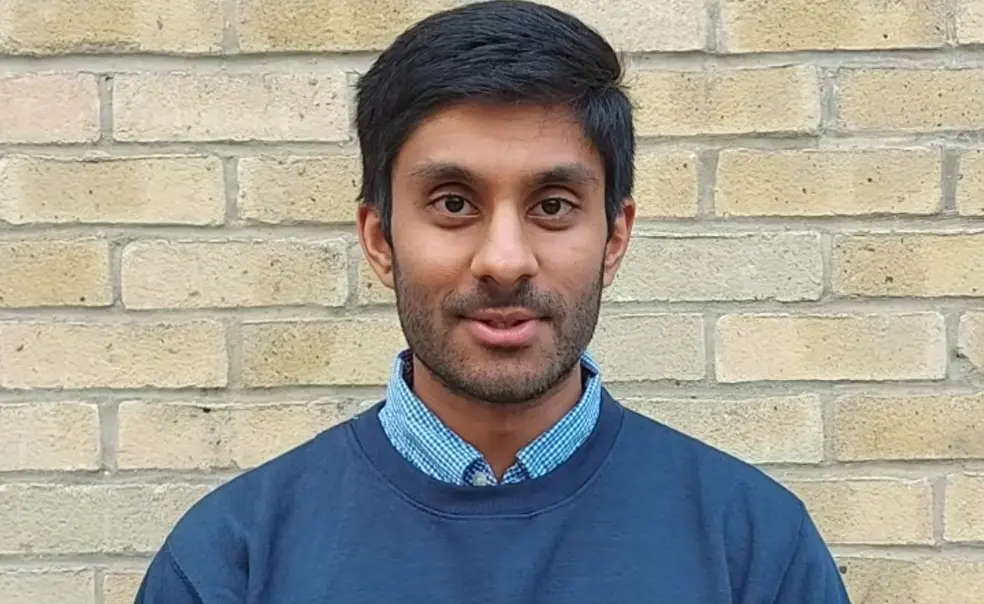Bhadrajee S. Hewage ’20 Challenges our Knowledge of the Buddha
The book: Can we really trust our existing knowledge of the origins of the Buddha? Why has that narrative gone unchallenged for the past 200 years? These are questions Bhadrajee S. Hewage ’20 aims to tackle in Placing the Origins of the Buddha: An Island, Its People, and an Orientalist Odyssey (Cambridge Scholars Publishing), by highlighting the flaws and inconsistencies that continue to inform our current understanding of early Buddhism. Hewage actually started this research as part of his senior thesis and he traveled to Sri Lanka as part of the process, visiting National Archives and the libraries of different Buddhist organizations and temples. His goal is to “highlight alternative narratives based on information already available to us that will hopefully lead us to enhance our knowledge of early Buddhims and its origins,” Hewage writes. 
The author: Bhadrajee Hewage '20 is currently a Clarendon Scholar and a DPhil student in History at Trinity College, Oxford. He also holds a MPhil in Modern South Asian Studies from St. Edmund's College, Cambridge where he was a Prize Research Student at the Joint Centre for History and Economics. Prior to attending Princeton, he grew up in Dublin, Ireland. Bhadrajee studied History while at the University and minored in African studies, Latin American studies, and South Asian studies. While at the University, he was a recipient of the Peer-to-Peer Leader of the Year Award from the Office of Campus Life and also the A4P Senior Prize from the Asian American Alumni Association of Princeton.
Excerpt:
Seven years before his death in 1933, Anagarika Dharmapala reflected on his first visit to Bodh Gaya in 1891. Describing the utter neglect of the supposed site of the Buddha’s Enlightenment to his followers, the Ceylonese Buddhist revivalist reminded them: “I made a vow surrendering my life in the hope of rescuing the sacred spot from the hands of the Saivite fakirs who had control of the place.” Four months after his fateful visit, Dharmapala established the Maha Bodhi Society “to rescue the holy Buddhist places and to revive Buddhism in India which for seven hundred years had forgotten its greatest teacher.” The Society’s “principal object” being, according to Dharmapala, the recovery of the Mahabodhi Temple at Bodh Gaya from its Saivite custodians. As he lamented in 1923, “[t]he Muhammadans visit Mecca; the Christians visit Jerusalem; the Hindus visit the various Shrines [in India] …but the Buddhists of Japan, Burma, Siam, Ceylon, China and Tibet have forgotten their Holyland.”
Retracing Tagore’s voyages across the Indian Ocean to track the footprints of India’s overseas history, Sugata Bose argues that pilgrimage as a religious duty can easily become transformed into a “broader intellectual and cultural quest undertaken in its name”. Although, strictly speaking, Dharmapala’s quest was more populist than intellectual and religious than cultural, the transformational aspect of his pilgrimage rather than its thematic overtones is of importance here. In fact, venturing to Bodh Gaya in 1891, Dharmapala arguably helped to singularly propel a process that turned a secular nineteenth-century intellectual and cultural quest to locate this Buddhist “Holyland” into a religious mission to encourage the veneration of its “forgotten” sacred sites.
How Buddhists and non-Buddhists alike before Dharmapala came to accept this Indian Buddhist Holy Land, however, deserves further analysis. Indeed, the role of colonial Ceylon and the Ceylonese specifically in what was a long nineteenth-century process of placing the Buddha in northern India is of interest herein. Dharmapala’s arrival at Bodh Gaya coincided with and, indeed, grew out of a wider fin-de-siècle re-examination of deteriorating religious heritage across the Buddhist world. Dharmapala’s own Ceylonese contemporaries regarded the nineteenth century as an anduru yuga or “dark age” where Ceylon’s Sinhalese Buddhist population declined culturally and religiously. The final British conquest of Burma in 1885 appeared to indicate to the Burmese that their Buddhist heritage was stagnating, with Buddhist elites in Cambodia also acknowledging during the 1890s that their Khmer culture was declining under French rule. In Japan, too, the aftermath of the 1868 Meiji Restoration witnessed a wider realization among Buddhists that Japanese Buddhism remained tainted with the corruptions of the Tokugawa period and was in danger of becoming insignificant.
Although ultimately falling onto deaf ears, Dharmapala’s clamouring for Bodh Gaya during the 1890s also coincided with his emergence onto the Ceylonese Buddhist scene itself during the same period. With the gradual disestablishment of the Buddhist religion on the island polity accompanying the “secularizing displacements” which followed the fall of the Kandyan Kingdom to the British in 1815, a Buddhist re-awakening was in motion in which Dharmapala came to occupy a central position. Accepting that he was treading on a Buddhist revivalist path already laid by the clerical polemicist Migettuwatte Gunananda and the Theosophist Colonel Henry Steel Olcott, Dharmapala added his own impetus to what was, in effect, a third period of Buddhist revivalism on the island. Whereas Gunananda dealt primarily in polemics and Olcott concentrated his activities on legal reform and institutionalizing Ceylonese Buddhist revival, Dharmapala thus helped to internationalize what was then a primarily insular religious campaign. Fighting for Bodh Gaya while working to revive the Buddhism of his own native land, he strove to awaken the Ceylonese to their “ancestral” Indian Buddhist heritage in a manner hitherto unseen during colonial times.
While Dharmapala could lament in 1923 that the Ceylonese remained ignorant of their Holy Land, the same critique can surely not be levelled at Sri Lankan Buddhists today. If anything, the island’s Buddhists currently cannot seem to get enough of India’s Buddhist heritage. Indeed, owing to unprecedented demand, Indian Railways announced the establishment of a new route in 2011 from Chennai to northern India to cater specifically for Sri Lankan pilgrims. The following year, relics excavated at Kapilavastu left India for the first time and arrived in Colombo for a prolonged period of public display and veneration. In 2018, the Indian government further permitted the exhibition of more Buddhist relics from the mainland on the island during Vesak celebrations as a gesture of the “spiritual bond” tying the shared Buddhist heritage of the two nations.
Tim Winter describes as “heritage diplomacy” the ways in which heritage can function both as diplomacy and in diplomacy between nations, and the management of the Buddha’s traces on the subcontinent fits quite neatly into Winter’s concept. Using Buddhism to counteract increased tensions with India regarding developmental policies, human rights issues, and security concerns, Sri Lanka certainly continues to gain as much capital as possible from its religious connections to its much larger neighbour. Nevertheless, putting the motives behind Sri Lanka’s willingness to engage with India’s Buddhist heritage to one side, Dharmapala would surely welcome the popular engagement of Sri Lankan Buddhists today with the Holy Land he so revered during his lifetime.
Reprinted with permission from Placing the Origins of the Buddha: An Island, Its People, and an Orientalist Odyssey by Bhadrajee S. Hewage, Cambridge Scholars Publishing. © 2022 by Cambridge Scholars Publishing. All rights reserved.












No responses yet